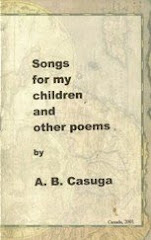APPRECIATION OF POETRY – A SUMMARY*
*(See July 1 entry on Language of Poetry for details.)
ANALYSIS
1. Sensory-Impressionistic Level: a. Printed Text, b. Sounds (Phonemes)
Results in impressions of mood, atmosphere, feeling, tone, and is usually termed as an “uneducated guess.”
2. Cognitive Level: a. Imagery, b. Symbols
Results in:
a. Recognition of a Gestalt or a complete picture from disparate images and symbols.
b. Apprehension of the experience being objectified
c. Educated guess at the point of the poem
3. Associative Level: a. Contextual, b. Structural
Results from:
a. Reader’s interpretation
b. Poetic utterance
c. Literary and verbal devices
Results in: Comprehension of the meaning or significance of the experience or the point of the poem. It confirms the impressions and interpretations from the cognitive level.
Analysis Results in: Synthesis or realization of poem’s point or theme which is equivalent to the recognition of the artistic purpose (poet’s intention of objectifying and subjectifying his aesthetic experience).
CRITICISM
Style
Use of language: a. Diction, b. Selected Details, c. Symbols, d. Linguistic devices
-- Words: denotations, connotations, figures (thought, language, and speech), history of meanings.
Do they serve the artistic purpose of objectifying and emotionalizing the experience?
Technique
Order and arrangement of structural parts and images.
-- Presentation of structural parts; Scale of structural dimensions; Point of view; other techniques from other poets and other traditions
Do they serve the artistic purpose of concretizing and subjectifying the experience?
Renders a judgment on how well the author used his primary materials—poetic devices. Results in the experience of pleasure or the aesthetic attitude of recognizing “beauty” (in the perceived object of art).
EVALUATION
Universal Values: Intellectual, emotional, spiritual, permanence, universality, artistry
Answers: Is it good literature?
Formal Values: Artistry of style and technique peculiar to the genre.
Answers: Is it a good poem?
Personal Values: Moral, philosophical, psychological, sociological, archetypal, historical.
Based on personal bias provided it is based on empirical, observable, measurable text
Results in: a valuative judgment on the worth of the poetic/aesthetic experience objectified in the poem.
The appreciator, having gone through these levels of appreciation, should find this a thorough experience of literature as a humanistic discipline. The literary theory behind this mode of appreciation can liberally admit of other trends and other theories without being unnecessarily truncated or compromised as a system of educating artistic "taste".











No comments:
Post a Comment